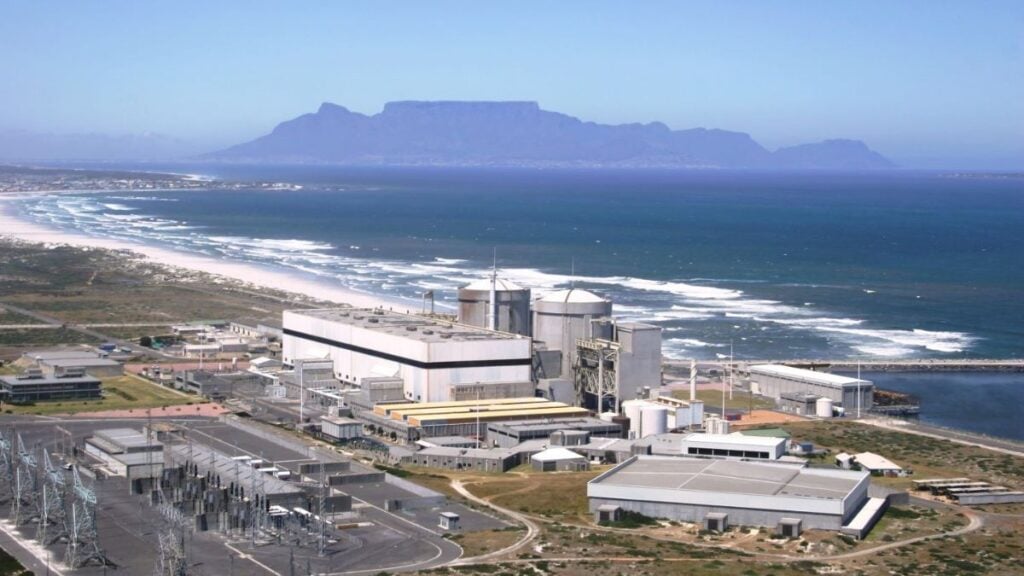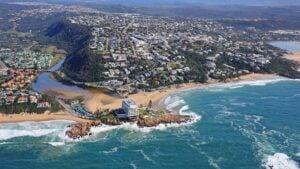Big nail in the coffin for load shedding in South Africa delayed

Power utility Eskom has announced that the planned maintenance on Koeberg Unit 1 will be delayed by about a month, with the unit now expected to return to operation by August.
The 930 MW nuclear plant unit is currently offline for the second phase of a long-term operation extension and was initially planned to be back online in July.
However, due to faults found during inspections and maintenance, this has been pushed by to the end of August.
Eskom said that eddy current inspections — a non-destructive testing method used to detect cracks, corrosion, or wear in the metal tubes of steam generators — identified defects on four tubes among several thousand tubes inspected, across two of the newly installed generators.
“Eskom immediately carried out an advanced automated process to address the four tube defects, supported by specialised international teams working alongside local experts,” it said.
“These critical repairs have now been successfully completed to uphold the highest safety and quality standards.”
The major maintenance activities were successfully completed, including the legally required 10-year Integrated Leak Rate Test (ILRT), where the reactor building was pressurised over 72 hours and its leak rate and structural integrity were monitored.
Bheki Nxumalo, Eskom’s Group Executive for Generation, said the maintenance will help Eskom improve its long-term base load.
“Once all maintenance work is complete, Koeberg Unit 1’s reactor core will be refuelled, tested and synchronised back to the national grid,” Eskom said.
To protect supply, planned outages at Koeberg are carefully staggered every 16 to 18 months so that both units are never offline at the same time.
Together, Koeberg Units 1 and 2 provide around 1,860MW — approximately 5% of the country’s electricity needs.
Unit 2 remains fully operational, generating up to 946MW, with a year-to-date Energy Availability Factor (EAF) of 99.38% as of the end of June 2025.
No added risk of loadshedding
According to Eskom, the revised return date for Koeberg Unit 1 will not increase the risk of load shedding, with sufficient capacity on-grid to meet demand.
In parallel to the Koeberg maintenance, Eskom has made progress on other generation projects this year, with two of them already adding 1,600MW to the grid.
On 23 March 2025, the new 800MW Kusile Unit 6 was successfully synchronised to the national grid and will be in commercial operation by September 2025.
From February 2025 to the end of May 2025, the 800MW Kusile Units 1, 2 and 3 were safely reconnected to the repaired west stack and are now operating with their flue gas desulphurisation (FGD) systems.
On 6 July 2025, the 800MW Medupi Unit 4, which had been on a long-term outage since August 2021, was returned to service.
Eskom added that the Winter Outlook published in May 2025, which covers the period until 31 August 2025, remains valid.
“Importantly, the planned return of 2,500MW this winter does not rely on Unit 1,” the utility said.
The winter outlook shows that load shedding will not be required if unplanned outages remain below 13,000MW.
Even if outages rise to 15,000MW, load shedding would be limited to a maximum of 21 days over the 153-day winter period, capped at Stage 2.
Since 15 May 2025, no load shedding has been implemented, and only 26 hours of load shedding have been recorded for the financial year to date (1 April to 10 July 2025).
This is despite outages exceeding 15,000MW on multiple occasions. The utility has turned to increased diesel spending to prevent load shedding.
Eskom said the national power system remains stable, with a month-to-date EAF of 62%.
“As the winter season continues, Eskom encourages all customers to adopt energy-efficient practices,” it said.




















